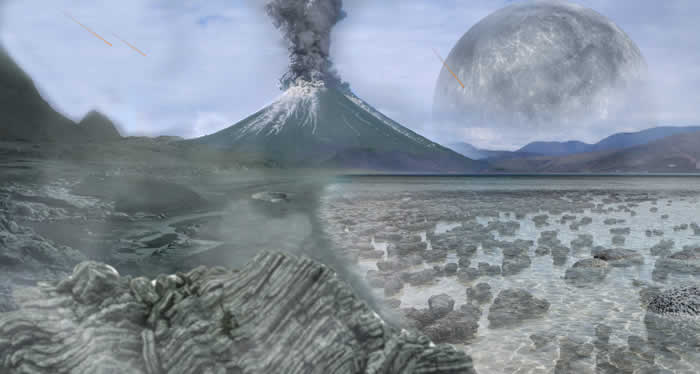
Earth's four great eons
The history of Earth is divided into four great eons. Each eon saw the most significant changes in Earth's composition, climate, and life. Each eon is subsequently divided into eras, which in turn are divided into periods, which are further divided into epochs.
 Timelines
Timelines